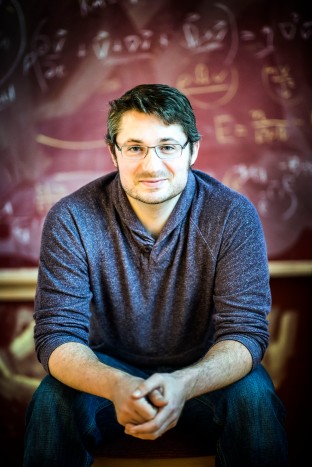I’m Zach Adam, a paleontologist, prebiotic chemist, and engineer fascinated by two of the biggest jumps in complexity known to have occurred in the history of our planet: the origins of life and the origins of the eukaryotic cell.
My most significant contributions so far have been to discover:
- Autocatalytic cycles formed from comproportionation reactions across the the entire periodic table might support life-like chemical systems or produce false positive biosignatures on distant exoplanets (forthcoming in JACS; more info at Autocatalytica)
- Multimodalities and discontinuities in the mass distribution of cellular biosynthesis point to a possible universal biosignature for living systems (preprint at bioRxiv)
- New pathways to synthesize the sugar, nucleotide precursors and condensing/leaving agents alongside one another in a single pot via irradiation of water, salt and HCN (published in PNAS, Scientific Reports and ChemistrySelect)
- Indications that simple compound irradiation can drive self-organization of monomer synthesis: a non-living predecessor to living systems, and perhaps a new compelling paradigm for prebiotic chemistry experimentation (published in Scientific Reports)
- New techniques in molecular biology that can be applied to fundamental problems in Precambrian paleobiology (published in Molecular Biology and Evolution, Cell Reports, and Geobiology),
- New assemblages of incredibly well-preserved, complex, eukaryotic microfossils in the Greyson Formation of the Belt Supergroup, providing new evidence that links these fossils with existing eukaryote lineages (published in Geology)
- New sources of well-preserved fossils in the Chamberlain Formation of the Belt Supergroup, supporting indications that even the earliest eukaryotes were partitioned into distinct groupings in different environments (published in GSA v.522)
I’m currently a Research Scientist in the Department of Geoscience at the University of Wisconsin – Madison. My work is currently funded by the National Science Foundation, the John Templeton Foundation, and the Research Corporation through a SciAlog Fellowship. Prior work has been funded by the Simons Collaboration on the Origins of Life, the Agouron Institute, NASA and the National Science Foundation.
If you’re looking for specific information about the use of radicals for prebiotic experiments, you should head over to our new website, the Radical Experiments for Prebiobic Origins (REPO) Center.
Within this site, you’ll find information about some really cool fossil discoveries and prebiotic chemistry experiments, enjoy!
 Photo credit: Nerissa Escanlar.
Photo credit: Nerissa Escanlar.